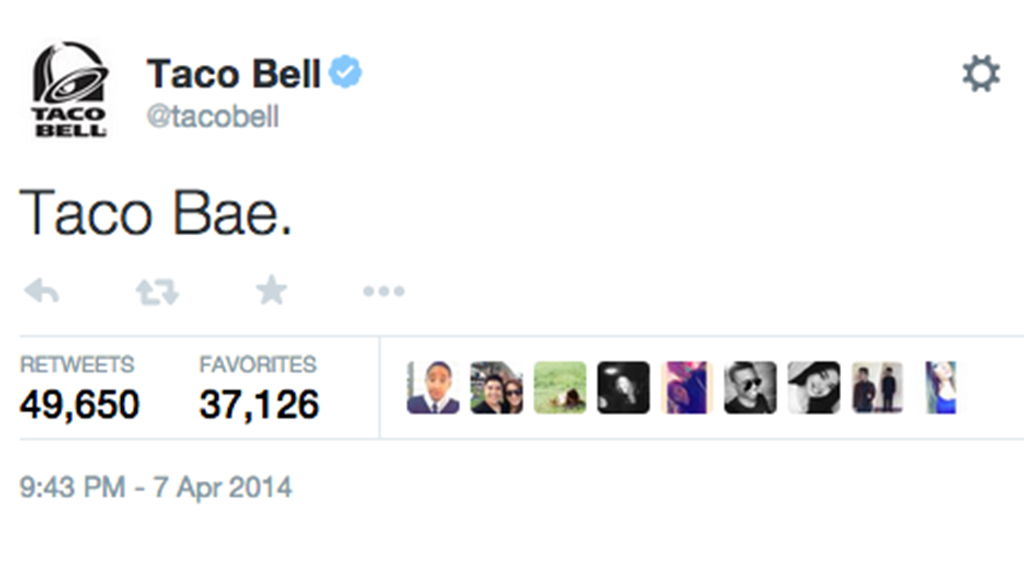Corporations struggling to reach youth through cultural appropriation
 Screenshot
ScreenshotA lot of us have those awkward relatives who try to keep up with current trends, but are obviously out of touch and unable to succeed. That uncle who’s a bit too old to be cool but tries to use current slang, or that great-aunt who tries wearing booty shorts that only end up looking kind of out of place. Some companies nowadays are like those relatives.
Most recently, a lot of companies are getting on the “bae” train — trying to use the word “bae” in order to appeal to their ideal target demographic, consumers aged 13-24 who are tuned in to popular culture. Appropriating youth culture in an attempt to fit in, especially when it’s on the part of a large company, is silly and just as awkward as when a person way outside the age range of the average youth tries to fit in — more often than not, they just aren’t within the right range for the use of youth culture to come off as genuine and work most of the time. A corporation is a corporation, and it shouldn’t try to act like a teenager. Everyone knows what’s going on — that this charade of hip behaviour is an attempt to generate page clicks and a greater viewership.
Going back to the “bae” trend, all kinds of companies are trying to use the word to seem in touch, like when Burger King, Ragú and Hamburger Helper use it on Twitter. But their attempts to connect with today’s youth just sound weird instead of cool. Other slang terms have been picked up, like “bruh” and even “on fleek.” There’s even a Twitter account called @BrandsSayingBae, which highlights the prevalence of the term in marketing campaigns across Twitter and mocks companies who overuse it or use it incorrectly. Taco Bell’s incoming CEO Greg Creed mentioned in a press conference that Taco Bell is trying to stay in contact with millennials, but then goofed when he said that Taco Bell is staying “on cleek” — screwing up the term he was trying to appropriate. All of this just makes the parties involved look foolish. “Bae” is a term for young consumers of popular culture, not a pasta sauce company trying to up their cool reputation.
Denny’s is a clear example of a Twitter success story — a company that managed to pick up on the idiosyncratic, shortened tone of the tweet in a wonderful way while clearly not pretending to be anything other than what it is: a restaurant with its own distinct identity. This is helped along by the occasional promotional tweet regarding a new sale or product. These flashes of genuine marketing help Denny’s to stay authentic, rather than exemplifying a brand that goes out of its way to jump on a seemingly cool bandwagon symbolized by contemporary slang rather than hammering out a distinct identity of its own.
Other brands should take a page from Denny’s playbook and their advertising approach—instead of trying to appropriate contemporary slang (and misusing it) in an effort to rise to trendiness through viral and largely effortless means, they should embrace the unique voices and modes that each type of social media allows for on the Internet.
Twitter, depending on who is tweeting, is at turns funny, random, silly, weird and serious, an eclectic mix that Denny’s has successfully incorporated into its Twitter persona. If brands did the same across the board while staying genuine to their messages and their product, they would come across less like a weird older relative trying to fit in and more like someone trying to genuinely connect with their audience, and maybe they would be a little more successful while doing so.




